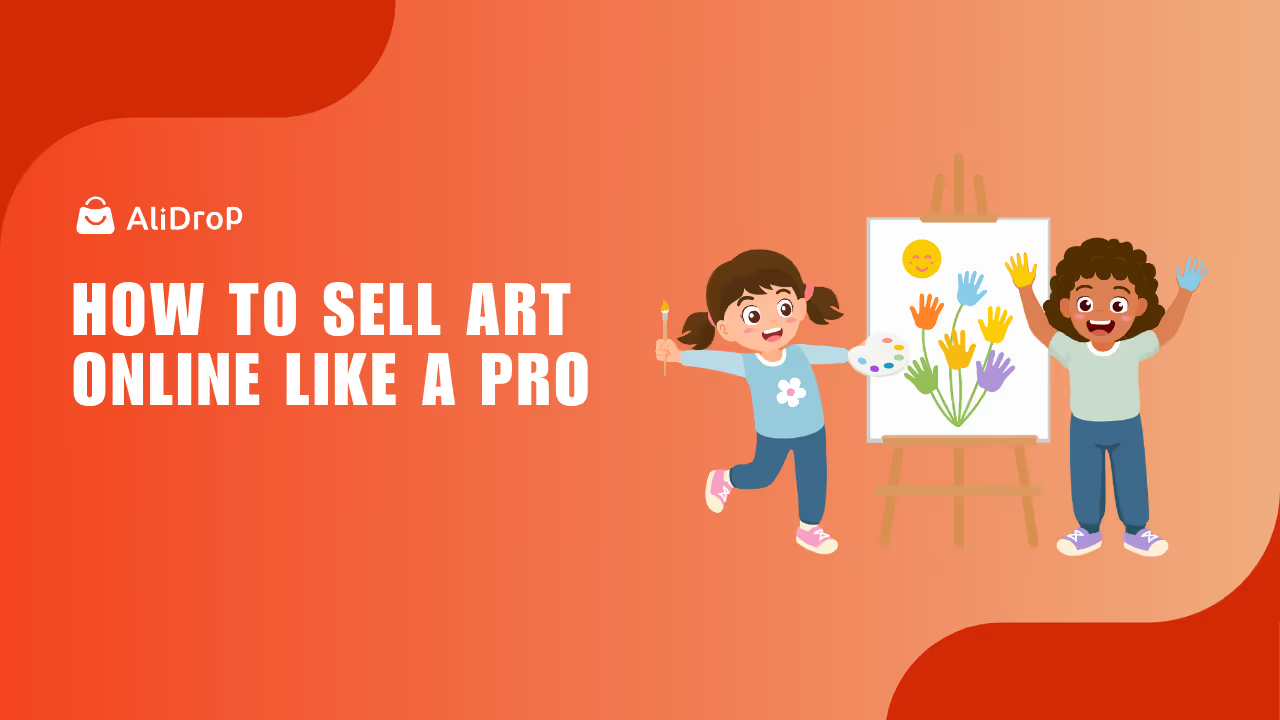There are many ways you can sell art online. Selling your art doesn't have to be rocket science or difficult. You just have to know the right places to look for. Also, it depends on what you're working with. If you're a beginner artist just starting out, then you have to consider various options.
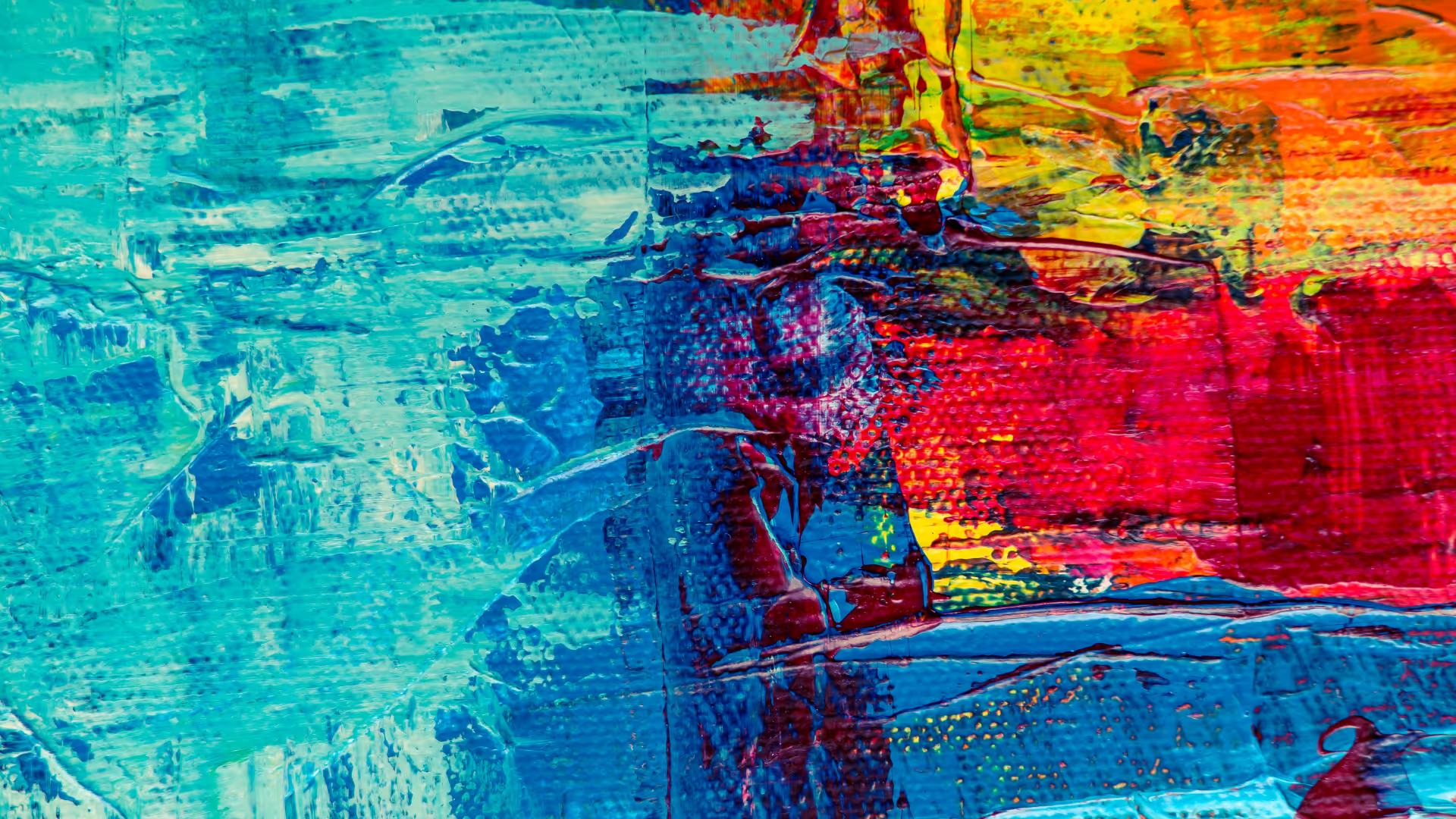
It's a good idea to keep your options open. But if you are highly skilled and advanced, then you can take a more nuanced approach. In this guide, we will share with you different ways on how to sell art online. We will explore different avenues. You can try out what kinds of commission fees some platforms charge and how else to approach your selling career.
Best Ways to Sell Your Art Online in 2025
Here is what you need to be aware of to know how to sell art online. These are some of the best platforms out there that can help:
1. YouTube
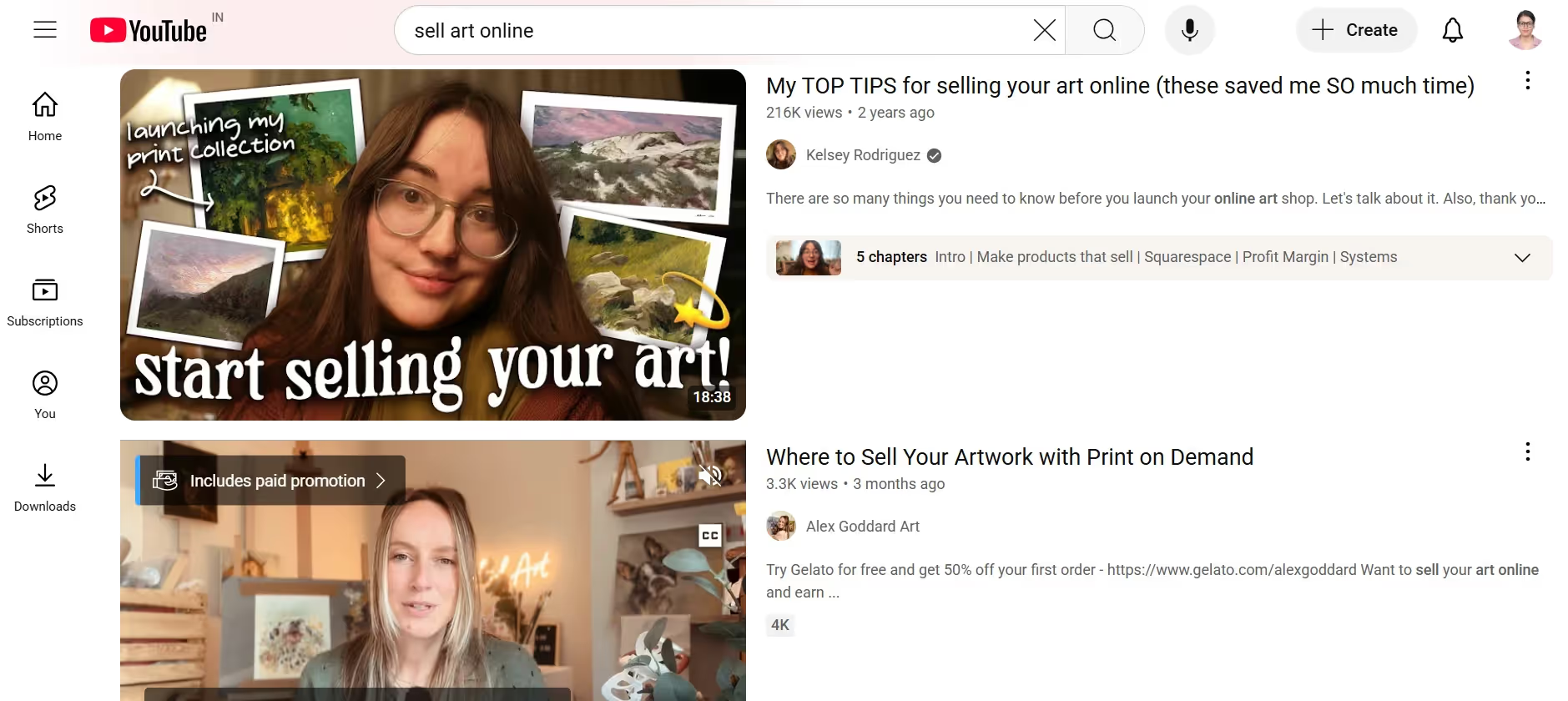
YouTube is one of the best ways to know how to sell art online. Because you can experiment hands-on with motion videos, animations, graphic designs, and see what works or not. It’s a great way to showcase your work, raise funds, and get live donations. Q and A streams help you connect directly with your fans and you can get instant feedback. Granted, most of the content will be in video, but we think any serious content creator or artist these days uses YouTube.
YouTube will reward you generously. Ads will appear on top of your videos and you will earn a cut out of them. YouTube is great not just for building a huge following but also because it makes it easier to attract a global audience. You can redirect your viewers to your website and ask them to buy your prints. It's a great way to funnel traffic and make more sales.
You should also try out YouTube shopping where you can sell print-on-demand art products and other goodies. You can also set up a custom Shopify store and link it to your YouTube page. Whenever buyers want to buy something, they can check out your brand online and buy directly from there.
2. Sell Art on Amazon Handmade
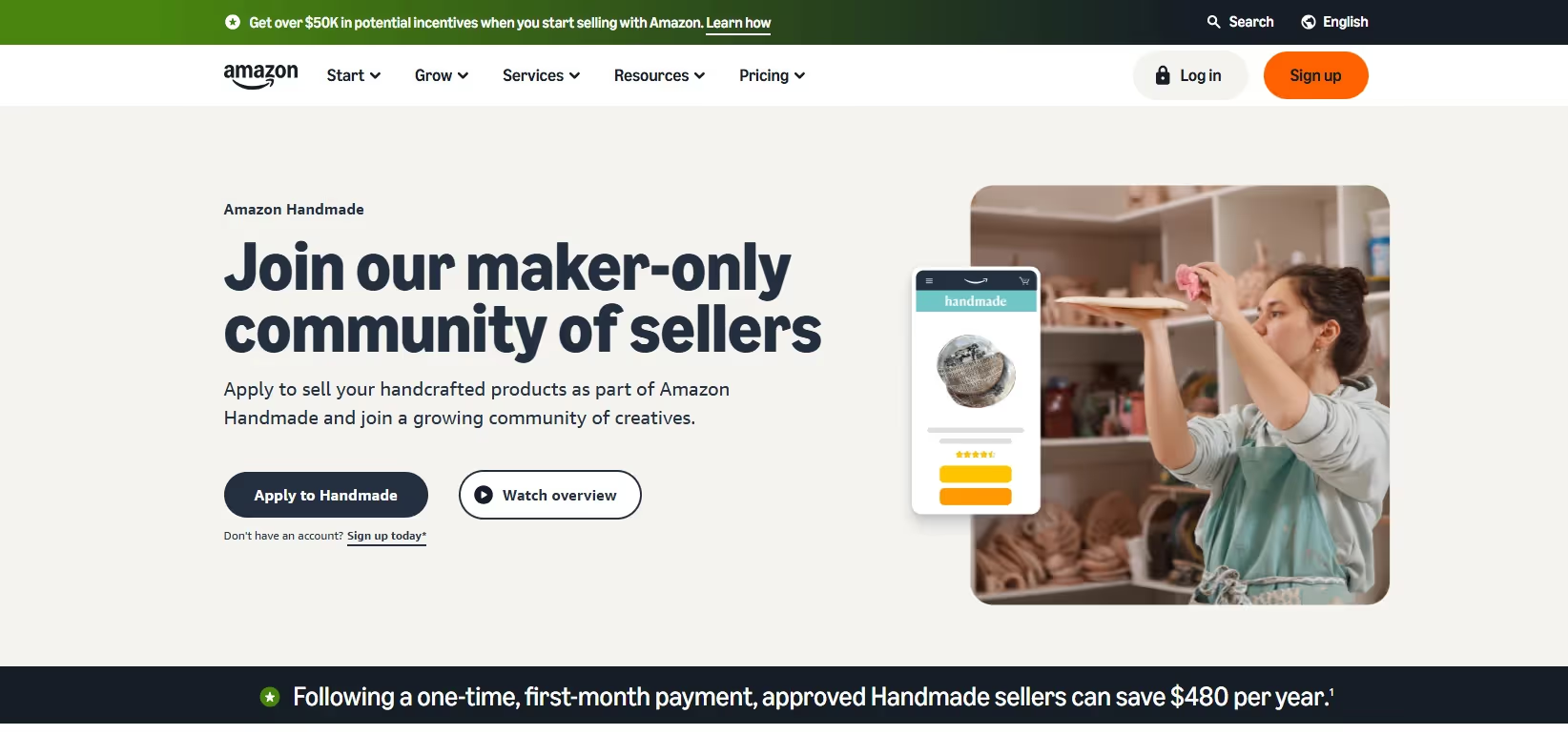
Amazon Handmade is another great choice or platform where you can sell your art online. It's crafted specifically for graphic designers, illustrators and art sellers. Keep in mind that their verification process is very strict and you might have to go through a few hoops before your profile is approved.
But once you get your profile up and running, you can start selling your art online. Be sure to read the terms and conditions to know how much commission they charge on every sale. Amazon Handmade is great if all you want to do is focus on your art while the platform handles the logistics and shipping for you. It's an awesome site if you don't have time to set up your business but want to sell your art anyway through a platform. You can learn how to sell art on Amazon here.
3. Etsy Store
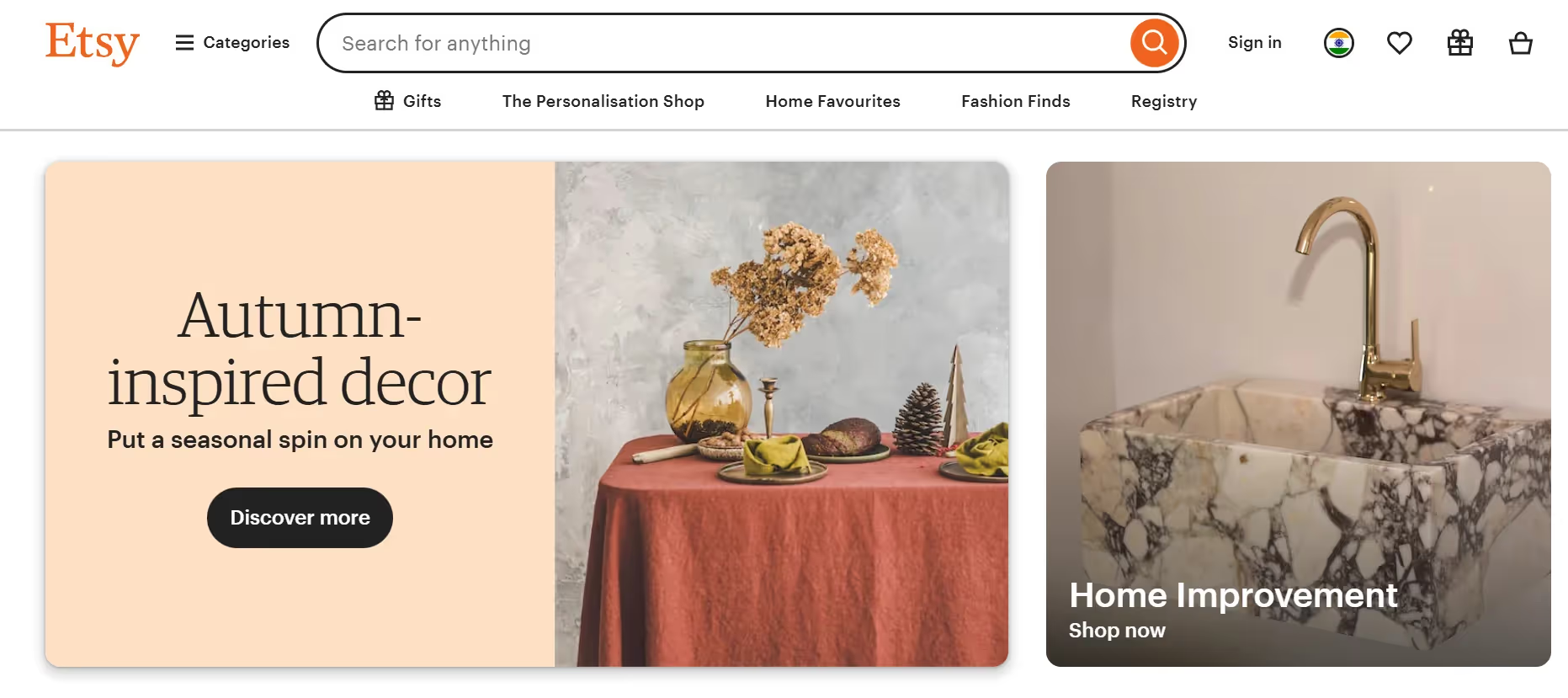
You can sell art online or dropship your art on Etsy. Etsy has been famous for years when it comes to selling handmade goods, jewelry, arts and crafts items and other products. You can customize your Etsy store. They are organic and their organic traffic is highly recommended. Etsy does better than Amazon handmade when it comes to selling art products online.
You can customize the look and feel of your store and your storefront can look like a gallery which buyers can scroll through. Etsy is also very mobile responsive with fast loading times. Their site performance is great. The returns and refunds process is also seamless and hassle-free so you won't have an issue with that. Buyers can communicate with you directly through Etsy chat and Etsy's customer support team is also very responsive. Overall we recommend Etsy because it's all-round good for artists and designers because Etsy is made specifically for artists.
4. Spocket
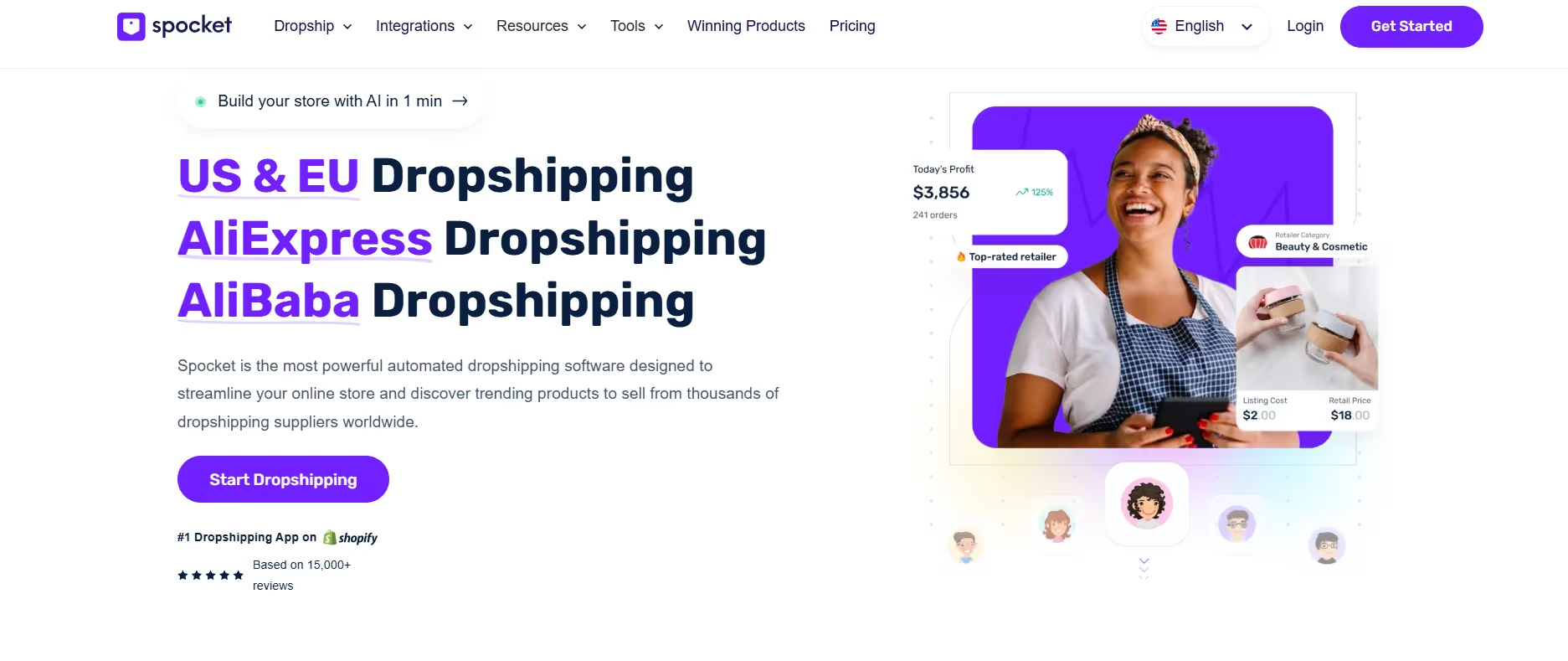
If you'd like to sell your art online in the form of print-on-demand products and merchandise, then Spocket can be a great choice. It's a dropshipping platform that offers the best US and EU suppliers. All of Spocket's dropshipping suppliers are vetted and verified, and they have a catalog of over 100 million trending dropshipping products.
You can sell your designs online on Spocket through their POD program. If you'd like to earn money through commissions, you can also check out Spocket's affiliate program. If you promote Spocket's brand in your art store, you can make money through word of reference. So anytime someone signs up on the platform, you can earn through their clicks.
Spocket has a huge user base and tons of entrepreneurs who rely on the platform for dropshipping services. So if you are selling or marketing print-on-demand products, you can build up quite a following of clients. Some clients might order samples or buy your art products in bulk. You can also check out Spocket's design guides, graphic design templates, and their other notes on their website, just to get an idea of how to upload your designs for their print-on-demand products.
5. Alidrop
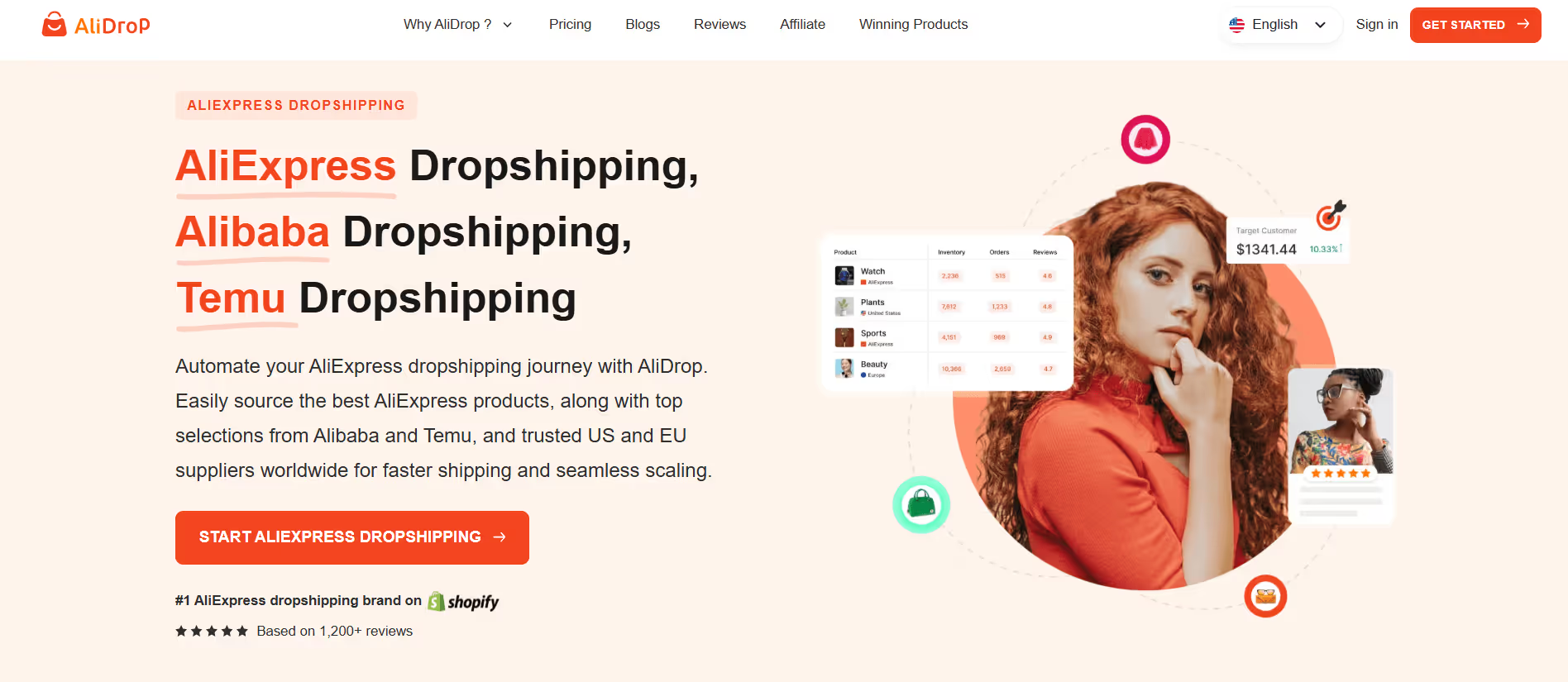
Another alternative besides Spocket is Alidrop. It supports AliExpress, Alibaba, and Temu dropshipping. You can sell print-on-demand merch through their site, connect and source from the best suppliers, and automate your art dropshipping. Alidrop also offers custom branding options and is very flexible and scalable for entrepreneurs and businesses.
You can set up an AI Shopify store and load it with winning art products. For art business owners, Alidrop is a great choice. But if you are an individual seller or artist, you can take advantage of the platform as well. Alidrop’s AI product description generator will help you write SEO-optimized listings for your store. It will help your art products rank higher in SERPs and attract organic traffic. Be sure to check out their suppliers and try the Alidrop marketplace to get more ideas on how to promote your products through them.
6. Patreon
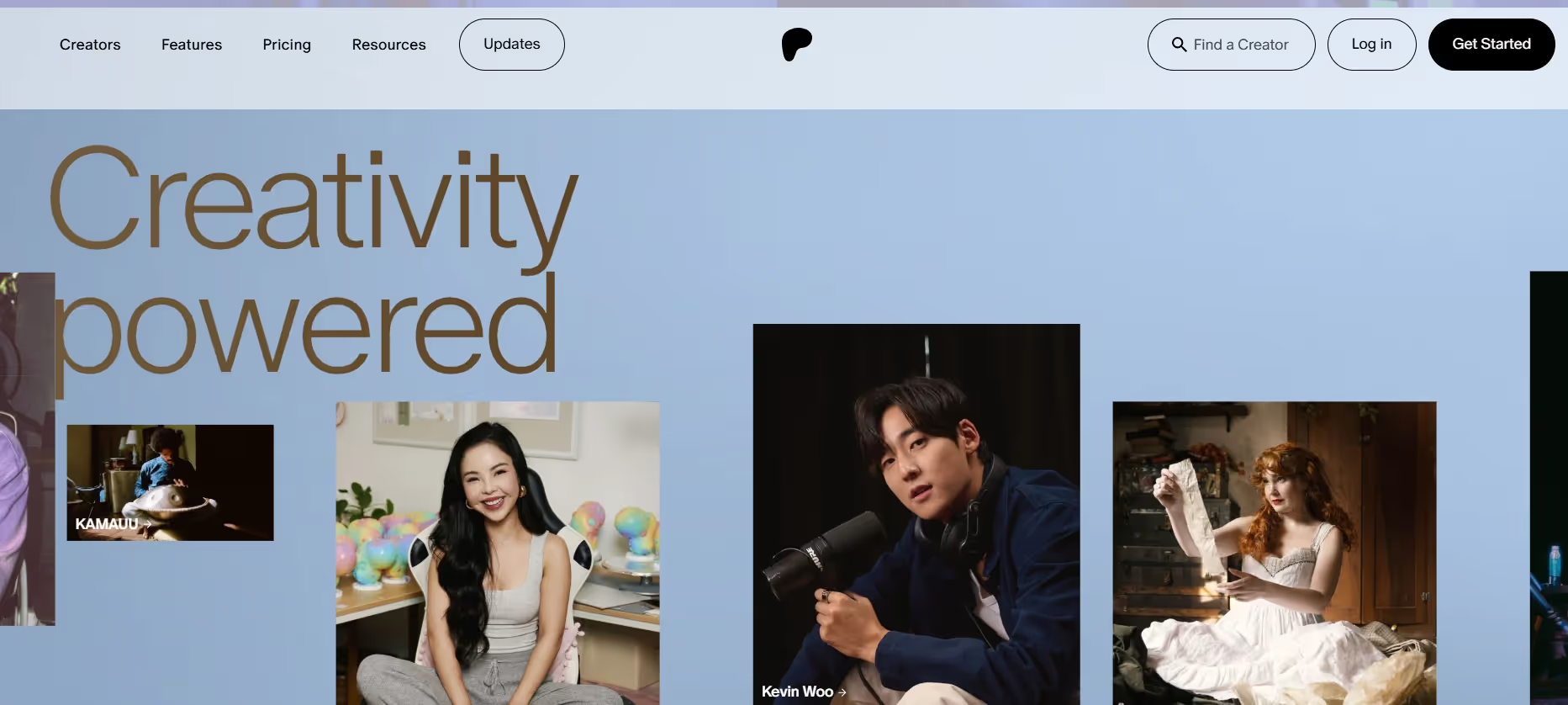
Patreon is one of our favorite ways on how to sell art online. You can set up your Patreon account and let your fans access goodies based on different tiers. Patreon lets you unlock access to exclusive services the more your buyers or fans pay up.
If you'd like an alternative to Patreon, you can also try Ko-Fi or Throne. These are websites that are similar to Patreon, but we like Patreon because it's more approachable, beginner-friendly, and straight-up easy to get started with. The best part about Patreon is you can create whatever you want and sell your art online. There are no rules or restrictions regarding what kind of art you want to make. You get complete creative freedom as an artist, which is one of the most awesome perks.
Patreon can also deliver your artistic content directly to your audience's inbox and feeds so you don't have to worry about any censorship or your art being blocked out. If you would like to explore NSFW art or content creation, Patreon can also be a good choice. You can also use OnlyFans to promote your art if you would like to sell NSFW art. But we're just putting it out there.
7. Fiverr
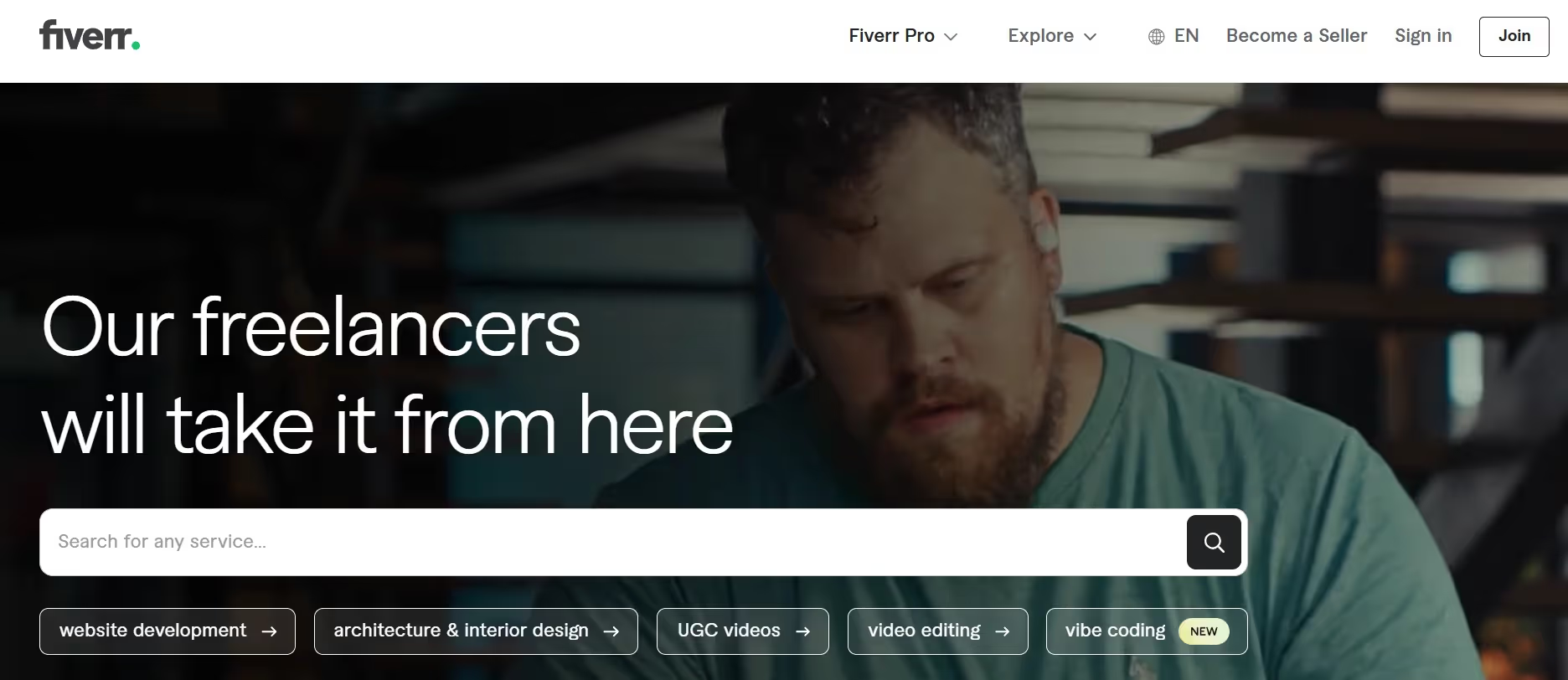
You can learn how to sell art online hands-on by trying out Fiverr. The way you get started is, you create a Fiverr account and set up a gig. The key here is optimizing your seller profile online on the platform.
You can set custom rates on Fiverr. Keep in mind that it's difficult to get started with Fiverr because there are already many sellers competing on the Fiverr marketplace. But as long as you get your first deal done, and you close the first gig, you will be on your way to growing your Fiverr profile. Your goal should be to become a top-rated Fiverr seller, preferably level 1 or 2, so that you can get a constant stream of work or requests. The more people request your gig, the more booked out you will be; it is as simple as that.
There's no limit to how much money you can make off of your art on Fiverr; it will completely depend on your skill set, the kind of art you make, and how much time you can spend on your clients. Check out some of the top Fiverr artists and see what keywords they are ranking for to get an idea on how to optimize your Fiverr profile. And then you can work your way from there.
8. Other Platforms You Can Try to Sell Your Art
Shopify stands out as an excellent option if you want to build your own independent art store. You pay a monthly fee of around $39, but you get complete control over your branding and customer relationships. You can customize everything from the look of your store to the shopping experience.
For print-on-demand services, Redbubble and Society6 handle all the printing and shipping for you. You simply upload your designs, and they take care of the rest. Fine Art America operates similarly but focuses specifically on fine art prints and offers artists the ability to set their own markup on top of base prices.
If you create digital art or want to explore newer markets, OpenSea is the largest NFT marketplace where you can sell digital artworks as non-fungible tokens. They charge a 2.5% transaction fee and allow you to set royalties for future sales.
Local selling shouldn't be overlooked either. With AI art flooding online markets, handmade and original artwork is becoming more valuable than ever. You can approach coffee shops, galleries, boutiques, museum stores, or artist co-ops in your area. Start small by making a list of local venues and reach out with samples or a short visit to introduce yourself. All these offline businesses have their own websites and after making your first few sales physically, you can switch to working from home and earn online via them.
How to Price Your Art for More Sales
How to sell art online well? It starts with your pricing. And here is how you can go about it:
- Setting up your art prices to make an average of 50-55% profit margin is ideal for maximizing sales.
- Cost-Plus Pricing forms the foundation of most pricing strategies. Calculate your materials cost, add your labor time multiplied by a reasonable hourly wage, then add your profit margin. For example, if materials cost $50, you spend 20 hours at $20 per hour, your calculation would be: ($50 x 2) + ($20 x 20) = $500.
- Square-Inch Method is widely used by professional artists. Multiply the length and width of your artwork to get total square inches, then multiply by your chosen dollar amount per square inch. Emerging artists typically start at $1-3 per square inch for gallery sales. If you're selling directly to collectors, you might start at $1 per square inch.
- Market-Based Pricing involves researching what similar artists with comparable experience charge for their work. Look at factors like dimensions, medium, materials, and the artists' achievements such as exhibitions, prizes, or press coverage. Always compare with art that has actually sold, not pieces that are still for sale.
- Value-Based Pricing considers the perceived value of your artwork to buyers. This includes your reputation, the uniqueness of the piece, and the emotional connection it creates with viewers. As you build your brand and gain recognition, you can gradually increase prices.
Types of Artistic Services You Can Offer to Clients
Here are different types of services you can offer as an artist. You will learn how to sell art online and get more clients by trying them out:
- As a freelance artist, you have numerous service options beyond just selling finished artwork. Commission work remains one of the most lucrative paths, where clients hire you to create custom pieces tailored to their specific needs. This includes commissioned portraits, wedding videography, mural painting, and sculpting.
- Design services offer steady income streams. Logo design for companies, graphic design for marketing materials, and book illustration are all high-demand services. You can charge premium rates for branding projects since businesses understand the value of professional design.
- Digital art services are increasingly popular. This includes creating social media graphics, website illustrations, album cover art, and digital marketing materials. Many clients need ongoing design work for their social media presence, which can provide recurring income.
- Print-on-demand design allows you to create artwork that gets printed on various products like t-shirts, mugs, and phone cases. Platforms handle the manufacturing and shipping while you earn royalties on each sale.
- Teaching and consulting services can supplement your art income. You can offer art instruction, critique sessions, or consultation on art-related projects. Many people are willing to pay for personalized art education.
- Photography services extend your artistic skills into commercial applications. Wedding photography, product photography, and portrait sessions all command good rates. Event photography and corporate headshots are also reliable income sources.
- Art curation and styling services appeal to businesses and individuals who want professional help selecting and arranging artwork. Interior designers often collaborate with artists for client projects.
Best Art Niches to Target and Avoid
Certain art niches consistently perform better in online markets:
- Health and wellness themes sell particularly well, especially stress relief and mindfulness-related artwork. Mental health journals, affirmation cards, and calming abstract pieces resonate with buyers seeking emotional wellbeing.
- Pet and animal artwork represents a profitable niche with passionate buyers willing to pay premium prices. Custom pet portraits, wildlife art, and cute animal illustrations consistently generate strong sales.
- Home decor and lifestyle art performs exceptionally well, particularly minimalist wall art, botanical prints, and abstract pieces that complement modern interior design.
- People constantly redecorate their spaces and seek artwork that matches their aesthetic.
- Travel and experience-based themes tap into people's love for documenting trips and planning adventures. Travel journals, destination prints, and cultural artwork maintain steady demand.
- Motivational and inspirational content sells well across multiple platforms. Quote art, affirmation prints, and success-themed imagery appeal to people focused on self-improvement.
- Seasonal and holiday artwork provides predictable sales cycles. Christmas, Halloween, Valentine's Day, and other holiday-themed pieces spike in demand during relevant seasons.
Niches to avoid include:
- Oversaturated markets like generic landscape paintings and overly complex designs that don't translate well to print-on-demand products.
- Avoid controversial or offensive themes that limit your potential customer base.
- Also steer clear of copyrighted characters or trademarked imagery that could result in legal issues.
- Highly competitive niches like general abstract art or common flower paintings make it harder to stand out without a unique style or marketing approach. Very niche topics with extremely limited audiences may not generate enough volume to be profitable.
Conclusion
You don’t need to know magic to master how to sell art online. All it takes is starting with the right platform, having something you can sell and running with that. If you are good at what you do and think your customers will notice, then you are on the right track. You just need to use the right platforms and connect with the right buyers. There is always a great buyer for every artist out there, so don’t give up hope. Good luck! Now you know how to sell art online like a pro. ;)
How to Sell Art Online FAQs
What percentage do online art platforms typically charge?
Most online art platforms charge commission rates ranging from 10% to 45% per sale. Etsy charges around 6.5% transaction fees plus listing fees, while Saatchi Art takes 35% commission. Gallery-focused platforms like Artfinder charge 40-45% commission, but they provide curation and marketing support. Print-on-demand sites often take lower percentages since you're selling products rather than originals.
How should I photograph my artwork for online sales?
Professional photography is crucial for online art sales since buyers can't see pieces in person. Use natural lighting when possible, shoot straight-on to avoid distortion, and capture the entire piece without cropping. Include detailed shots showing texture and brushwork, and always photograph in high resolution. Consider hiring a professional photographer for your best pieces, as quality images significantly impact sales success.
Should I sell original artwork or prints online?
Both originals and prints have their place in online art sales. Originals command higher prices but have limited quantity, while prints offer scalable income with lower individual prices. Many successful artists sell both - originals for serious collectors and prints for broader market appeal. Print-on-demand allows you to test market demand without inventory investment, making it ideal for new artists.
What's the difference between selling on marketplaces versus my own website?
Marketplaces like Etsy provide built-in traffic and customer trust but charge fees and limit branding control. Your own website through Shopify or Squarespace offers complete control and better profit margins but requires marketing to drive traffic. Many artists use both approaches - marketplaces for initial exposure and their own sites for building long-term customer relationships and maximizing profits.





















